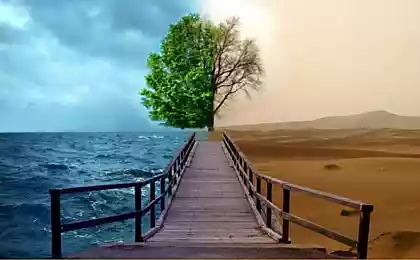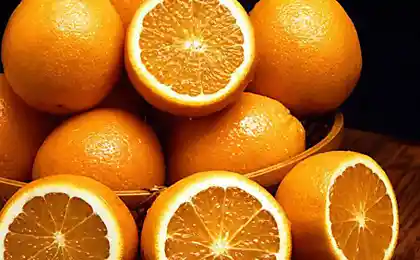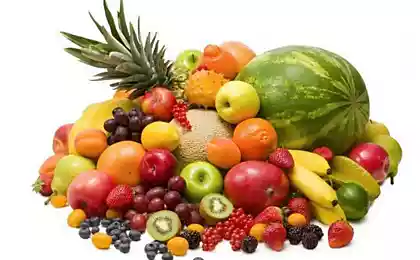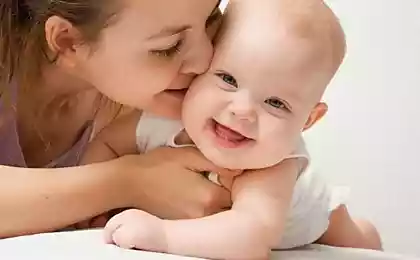1162
Origin of life from the inside
August 24, 1922 in the Swedish city Stangnas, Lennart Nilsson was born in a family in which a keen photographer.

Lennart Nilsson
Even in children, the Lennart more interested in the microcosm, one that can be seen only through a microscope. Armed with a microscope and a camera, he got into a simple look inaccessible worlds, inner worlds of man, in the literal sense of the word.
His path in photography Nilsson began in mid-1940's, working as a freelance contributor to various Swedish media. Already at that time, such works as the "Midwife in Lapland" and "Hunting for polar bears on Svalbard," brought him international attention. His experiments in the micrographs Lennart starts in the mid-1950s, and at the same time actively cooperates with various scientific and medical institutions.
For the first time to photograph the human fetus he succeeded in 1957. Unusual "sequential" shooting from the "bowels" of the female body became possible after Nilsson after a series of experiments was able to combine the microchamber and mikroosvetitel, securing them to the tube cystoscope (this device was used for the examination of the bladder from the inside) - so there unique images showing the process the birth of a human embryo and its development.
"When I first saw the fruit, he was 15 weeks, and he sucked her finger," - says Nilsson. - But the editors of magazines want me to take off the face of the fetus. It took many years ».
Nilsson has received international acclaim in 1965 when LIFE magazine published a 16-page photo of a human embryo. These photos are immediately replicated in Stern, Paris Match, The Sunday Times and other journals.
In the same year he published a book of photos Nilsson «A Child is Born», vosmimillionnny edition of which was sold in the first few days. This book has withstood several reprints and still remains one of the best-selling illustrated books in the history of this kind of albums.
Later Nielson continued his work, making not only photos but also movies.
In the 1960s - early 1970s, Nilsson worked with LIFE, making photomicrographs not only different stages of prenatal development of man, and other physiological processes in humans and animals.
The spacecraft Voyager I and Voyager II, carrying the message of extraterrestrial civilizations, in addition to other documents and photos also equipped with Nilsson. His scientific and photographic work he continues to this day.
The sperm in the fallopian tube.

The egg

One of the father's sperm 200 million, breaking through the shell of the egg, just poured into it ...

Sperm
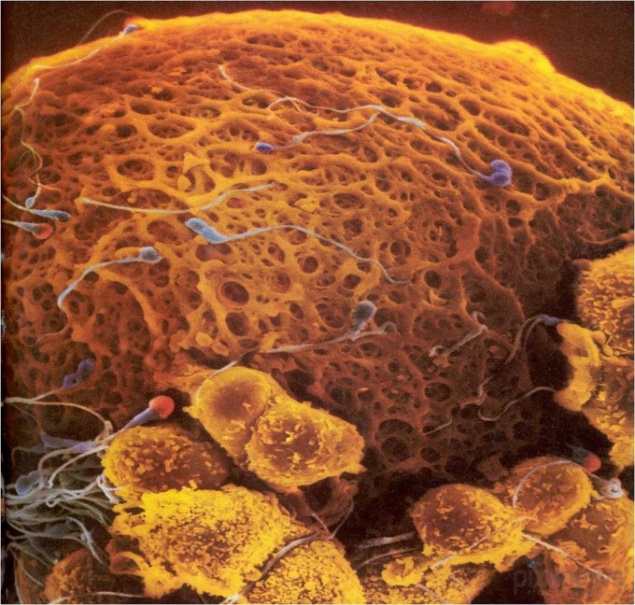
Germ.


Fruit.

8th week.

10 weeks. Eyelids are already half open. Within a few days, they will form completely.


16 weeks after fertilization. The skeleton is mainly composed of a flexible rod and a network of blood vessels visible through the thin skin.

16 weeks. An inquisitive kid is already using his hands to explore the area.

18 weeks. About 14 cm. The fetus can now perceive sounds from the outside world.

20 weeks after fertilization.

26 weeks after fertilization.

Source: pixanews.com

Lennart Nilsson
Even in children, the Lennart more interested in the microcosm, one that can be seen only through a microscope. Armed with a microscope and a camera, he got into a simple look inaccessible worlds, inner worlds of man, in the literal sense of the word.
His path in photography Nilsson began in mid-1940's, working as a freelance contributor to various Swedish media. Already at that time, such works as the "Midwife in Lapland" and "Hunting for polar bears on Svalbard," brought him international attention. His experiments in the micrographs Lennart starts in the mid-1950s, and at the same time actively cooperates with various scientific and medical institutions.
For the first time to photograph the human fetus he succeeded in 1957. Unusual "sequential" shooting from the "bowels" of the female body became possible after Nilsson after a series of experiments was able to combine the microchamber and mikroosvetitel, securing them to the tube cystoscope (this device was used for the examination of the bladder from the inside) - so there unique images showing the process the birth of a human embryo and its development.
"When I first saw the fruit, he was 15 weeks, and he sucked her finger," - says Nilsson. - But the editors of magazines want me to take off the face of the fetus. It took many years ».
Nilsson has received international acclaim in 1965 when LIFE magazine published a 16-page photo of a human embryo. These photos are immediately replicated in Stern, Paris Match, The Sunday Times and other journals.
In the same year he published a book of photos Nilsson «A Child is Born», vosmimillionnny edition of which was sold in the first few days. This book has withstood several reprints and still remains one of the best-selling illustrated books in the history of this kind of albums.
Later Nielson continued his work, making not only photos but also movies.
In the 1960s - early 1970s, Nilsson worked with LIFE, making photomicrographs not only different stages of prenatal development of man, and other physiological processes in humans and animals.
The spacecraft Voyager I and Voyager II, carrying the message of extraterrestrial civilizations, in addition to other documents and photos also equipped with Nilsson. His scientific and photographic work he continues to this day.
The sperm in the fallopian tube.

The egg

One of the father's sperm 200 million, breaking through the shell of the egg, just poured into it ...

Sperm

Germ.


Fruit.

8th week.

10 weeks. Eyelids are already half open. Within a few days, they will form completely.


16 weeks after fertilization. The skeleton is mainly composed of a flexible rod and a network of blood vessels visible through the thin skin.

16 weeks. An inquisitive kid is already using his hands to explore the area.

18 weeks. About 14 cm. The fetus can now perceive sounds from the outside world.

20 weeks after fertilization.

26 weeks after fertilization.

Source: pixanews.com

